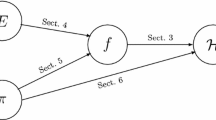Abstract
Cryptographic hash functions map input strings of arbitrary length to fixed length output strings. They are expected to satisfy several security properties that include preimage resistance, second preimage resistance, and collision resistance. The free availability of efficient software-oriented hash functions such as MD4, MD5 and SHA-1 has resulted in a very broad deployment of hash functions, way beyond their initial design purposes. In spite of the importance for applications, until 2005 the amount of theoretical research and cryptanalysis invested in this topic was rather limited. Moreover, cryptanalysts had been winning the battle from designers: about 4 of every 5 designs were broken. In 2004 Wang et al. made a breakthrough in the cryptanalysis of MD4, MD5 and SHA-1. Around the same time, serious shortcomings were identified in the theoretical foundations of existing designs. In response to this hash function crisis, in the last five years a substantial number of papers has been published with theoretical results and novel designs. Moreover, NIST announced in November 2007 the start of the SHA-3 competition, with as goal to select a new hash function family by 2012. We present a brief outline of the state of the art of hash functions in the last year of the competition and attempt to identify the lessons learned and some open research problems.
Access this chapter
Tax calculation will be finalised at checkout
Purchases are for personal use only
Preview
Unable to display preview. Download preview PDF.
Similar content being viewed by others
References
Andreeva, E., Mennink, B., Preneel, B.: Security reductions of the second round SHA-3 candidates. In: Burmester, M., Tsudik, G., Magliveras, S., Ilić, I. (eds.) ISC 2010. LNCS, vol. 6531, pp. 39–53. Springer, Heidelberg (2011)
Andreeva, E., Mennink, B., Preneel, B.: The parazoa family: generalizing the sponge hash functions. Cryptology ePrint Archive: Report 2011/028, 14 January (2011)
Bellare, M.: New proofs for NMAC and HMAC: security without collision resistance. In: Dwork, C. (ed.) CRYPTO 2006. LNCS, vol. 4117, Springer, Heidelberg (2006)
Bellare, M., Canetti, R., Krawczyk, H.: Keying hash functions for message authentication. In: Koblitz, N. (ed.) CRYPTO 1996. LNCS, vol. 1109, pp. 1–15. Springer, Heidelberg (1996)
Bertoni, G., Daemen, J., Peeters, M., Van Assche, G.: On the indifferentiability of the sponge construction. In: Smart, N.P. (ed.) EUROCRYPT 2008. LNCS, vol. 4965, pp. 181–197. Springer, Heidelberg (2008)
Bertoni, G., Daemen, J., Peeters, M., Van Assche, G.: The KECCAK sponge function family (2009), submission to the NIST SHA-3 competition
Damgård, I.B.: A design principle for hash functions. In: Brassard, G. (ed.) CRYPTO 1989. LNCS, vol. 435, pp. 416–427. Springer, Heidelberg (1990)
Diffie, W., Hellman, M.E.: New directions in cryptography. IEEE Trans. Information Theory 22(6), 644–654 (1976)
Dobbertin, H.: Cryptanalysis of MD4. J. Cryptology 11, 253–271 (1998); See also in Gollmann, D. (ed.) FSE 1996. LNCS, vol. 1039, pp. 53–69. Springer, Heidelberg (1996)
Dobbertin, H.: The status of MD5 after a recent attack. CryptoBytes 2, 1–6 (1996)
Dobbertin, H., Bosselaers, A., Preneel, B.: RIPEMD-160: a strengthened version of RIPEMD. In: Gollmann, D. (ed.) FSE 1996. LNCS, vol. 1039, pp. 71–82. Springer, Heidelberg (1996)
FIPS 180-1, Secure Hash Standard. Federal Information Processing Standard (FIPS), Publication 180-1, National Institute of Standards and Technology, US Department of Commerce, Washington D.C., April 17 (1995)
FIPS 180-2, Secure Hash Standard. Federal Information Processing Standard (FIPS), Publication 180-2, National Institute of Standards and Technology, US Department of Commerce, Washington D.C., August 26 (2002) (Change notice 1 published on December 1, 2003)
Lamberger, M., Mendel, F., Rechberger, C., Rijmen, V., Schläffer, M.: Rebound distinguishers: Results on the full Whirlpool compression function. In: Matsui, M. (ed.) ASIACRYPT 2009. LNCS, vol. 5912, pp. 126–143. Springer, Heidelberg (2009)
Merkle, R.C.: One way hash functions and DES. In: Brassard, G. (ed.) CRYPTO 1989. LNCS, vol. 435, pp. 428–446. Springer, Heidelberg (1990)
NIST SHA-3 Competition, http://csrc.nist.gov/groups/ST/hash/
Pal, P., Sarkar, P.: PARSHA-256 – A new parallelizable hash function and a multithreaded implementation. In: Johansson, T. (ed.) FSE 2003. LNCS, vol. 2887, pp. 347–361. Springer, Heidelberg (2003)
Preneel, B.: Analysis and design of cryptographic hash functions Doctoral Dissertation, Katholieke Universiteit Leuven (1993)
Rivest, R.L.: The MD4 message digest algorithm. In: Menezes, A., Vanstone, S.A. (eds.) CRYPTO 1990. LNCS, vol. 537, pp. 303–311. Springer, Heidelberg (1991)
Rivest, R.L.: The MD5 message-digest algorithm. Request for Comments (RFC) 1321, Internet Activities Board, Internet Privacy Task Force (April 1992)
Wang, X., Yin, Y.L., Yu, H.: Finding collisions in the full SHA-1. In: Shoup, V. (ed.) CRYPTO 2005. LNCS, vol. 3621, pp. 1–16. Springer, Heidelberg (2005)
Wang, X., Yu, H.: How to break MD5 and other hash functions. In: Cramer, R. (ed.) EUROCRYPT 2005. LNCS, vol. 3494, pp. 19–35. Springer, Heidelberg (2005)
Author information
Authors and Affiliations
Editor information
Editors and Affiliations
Rights and permissions
Copyright information
© 2011 Springer-Verlag Berlin Heidelberg
About this paper
Cite this paper
Preneel, B. (2011). The NIST SHA-3 Competition: A Perspective on the Final Year. In: Nitaj, A., Pointcheval, D. (eds) Progress in Cryptology – AFRICACRYPT 2011. AFRICACRYPT 2011. Lecture Notes in Computer Science, vol 6737. Springer, Berlin, Heidelberg. https://doi.org/10.1007/978-3-642-21969-6_26
Download citation
DOI: https://doi.org/10.1007/978-3-642-21969-6_26
Publisher Name: Springer, Berlin, Heidelberg
Print ISBN: 978-3-642-21968-9
Online ISBN: 978-3-642-21969-6
eBook Packages: Computer ScienceComputer Science (R0)




